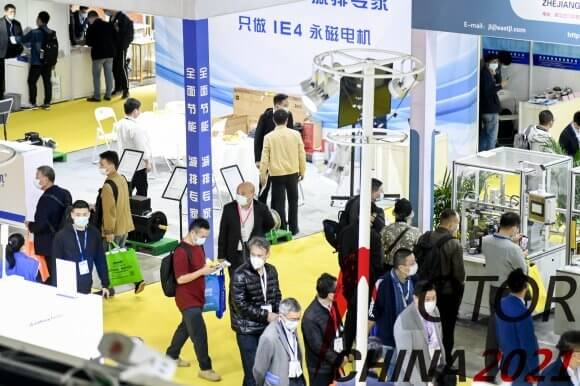Unleashing the Small but Mighty: A Deep Dive into Micro Mini RC Servos
In the world of remote control (RC) hobbies and miniature automation, size has often been a limiting factor—until the advent of micro mini RC servos. These tiny yet powerful components are redefining what's possible in the realms of model aircraft, robotics, drones, and even intricate hobby electronics. If you've ever marveled at the delicate movements of a high-performance RC plane or the nimble precision of a tiny robotic arm, chances are, micro mini RC servos are the silent heroes making those feats possible.

The Evolution of RC Servos
Traditional RC servos, once bulky and relatively heavy, served as the backbone for controlling a multitude of functions in larger models and devices. As technology advanced, so did the demand for smaller, lighter, and more efficient components. The shift from standard servos to micro and mini variants marked a significant milestone, allowing hobbyists to create more complex, lightweight, and nimble devices without sacrificing control quality.
What Are Micro Mini RC Servos?
Micro mini RC servos are miniature actuators designed to convert electrical signals into precise, controllable mechanical motion. Typically, they fall into a size category smaller than mini servos, often measuring less than 20mm in height, width, and depth. Despite their diminutive stature, these servos pack a punch in terms of power-to-weight ratio, offering high torque and rapid response times—features critical for applications requiring rapid, accurate movements.
Key Features and Specifications
Size and Weight: Usually ranging from 9g to 30g, micro mini RC servos are ideal for tight spaces where every gram counts. Torque: While small, many micro mini servos generate torque ranging from 1kg/cm to over 5kg/cm, enough to control tiny surfaces or robotic joints. Speed: Fast response times, sometimes as quick as 0.10 seconds per 60 degrees of rotation, making them perfect for swift adjustments in dynamic models. Voltage Range: Most operate efficiently within 3.7V to 7.4V, compatible with common lithium-polymer (LiPo) and NiMH batteries. Power Consumption: Their low power draw is another advantage, extending the operational time of battery-powered devices.
Advantages Over Conventional Servos
The benefits of micro mini RC servos extend beyond mere size reduction. Here are some compelling reasons hobbyists and professionals prefer these tiny devices:
Lightweight: Essential for drone pilots aiming to keep their aircraft agile and combat the added weight of sensors or cameras. Compact Design: Enables integration into miniature robots and intricate projects where space is at a premium. High Responsiveness: Shorter internal gear trains and advanced motor technology translate to quicker reaction times. Versatility: Suitable for a broad spectrum of applications—from controlling small control surfaces in RC planes to steering mechanisms in nano-sized robots. Cost-Effectiveness: As production techniques improve, micro mini servos are becoming more affordable, democratizing access to advanced control systems.
Design and Construction
Behind the tiny casing lies a thoughtful engineering marvel. Micro mini servos typically feature:
Gear Trains: Often made from durable plastic or metal to maximize torque and longevity. Motor: Small, efficient brushed or brushless motors designed for rapid movement and low power consumption. Control Electronics: Advanced circuitry that ensures smooth, precise control even in tight spaces. Connectors: Compact, standardized connectors that facilitate easy integration into various systems.
Qualities to Consider When Choosing Micro Mini RC Servos
Selecting the right micro mini RC servo requires a clear understanding of your project's specific needs. Some critical considerations include:
Torque Requirements: Ensure the servo can handle the load it's expected to move. Speed: Match the response times with the desired reaction speed of your model or robot. Size Compatibility: Confirm the servo dimensions fit within your design. Voltage Compatibility: Choose a servo compatible with your power source. Durability & Reliability: Look for high-quality materials and reputable manufacturers, especially if your project demands long-term operation. Control Compatibility: Verify that the servo's PWM pulse range aligns with your controller's specifications.
Applications Spotlight: Where Micro Mini RC Servos Shine
These tiny actuators are versatile powerhouses. Some standout applications include:
RC Aircraft & Drones: Operating control surfaces like ailerons, elevators, or camera gimbals in multi-rotors. Robotics: Present in miniature robots that perform complex tasks with limited space. Prosthetics & Wearables: Enabling delicate, natural movements in medical devices and smart clothing. Model Trains & Automata: Controlling intricate mechanisms that mimic real-world behaviors. Educational Kits: Allowing students to build and learn about mechanical control systems without hefty investments.
Market Leaders and Popular Models
While countless brands manufacture micro mini RC servos, some names stand out for their quality, affordability, and innovation. Among them are:
Futaba S3150: Known for reliability and precise control. Hitec HS-35: Lightweight with solid torque capabilities. Turnigy TGY-306G: An economical choice with decent performance. Goteck MG90S: Metal gear versions offering increased durability. Aliexpress & HobbyKing Brands: Providing budget-friendly options with good entry-level features.
Why Hobbyists and Developers Love Them
There's something inherently appealing about working with these miniature marvels. They empower creativity — enabling the realization of detailed, complex projects that would otherwise be hindered by size constraints. Moreover, micro mini RC servos foster experimentation, encouraging learners to understand the fundamentals of control systems, gear mechanics, and electronic integration.
Conclusion of Part 1
The world of micro mini RC servos is a testament to how technology continues to shrink, yet strengthen, functionalities, bridging the gap between power and precision in minuscule packages. Whether you're crafting a tiny drone, designing a robotic hand, or exploring new frontiers in electronics, these small but mighty components open a realm of possibilities, pushing the boundaries of what can be achieved in compact labs, hobby workshops, and high-tech industries alike.
I will prepare and send Part 2 shortly, continuing from where this leaves off.
Established in 2005, Kpower has been dedicated to a professional compact motion unit manufacturer, headquartered in Dongguan, Guangdong Province, China.




































